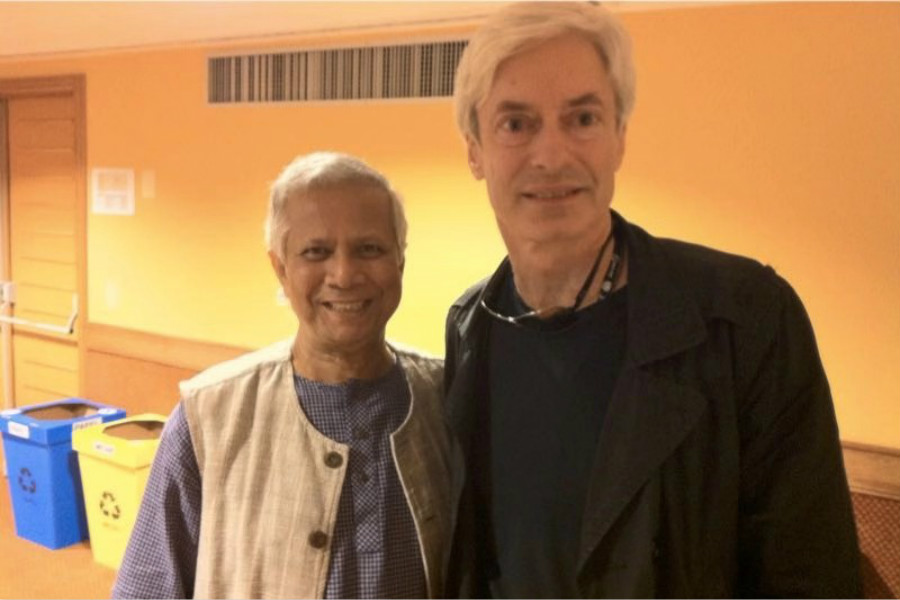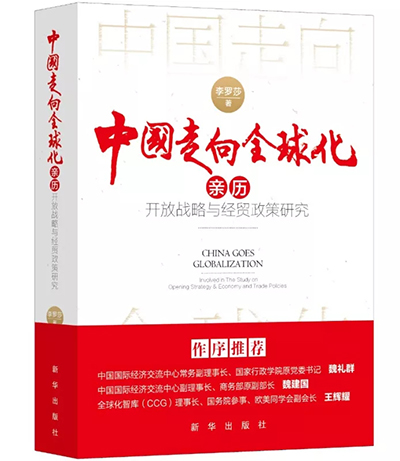全球化(globalization)一词,是一种概念,也是一种人类社会发展的现象过程。全球化目前有诸多定义,通常意义上的全球化是指全球联系不断增强,人类生活在全球规模的基础上发展及全球意识的崛起。国与国之间在政治、经济贸易上互相依存。全球化亦可以解释为世界的压缩和视全球为一个整体。二十世纪九十年代后,随着全球化势力对人类社会影响层面的扩张,已逐渐引起各国政治、教育、社会及文化等学科领域的重视,引发大规模的研究热潮。对于“全球化”的观感是好是坏,目前仍是见仁见智,例如全球化对于本土文化来说就是一把双刃剑,它也会使得本土文化的内涵与自我更新能力逐渐模糊与丧失。
- CCG南方国际人才研究院
- CCG北方国际人才研究院
- CCG一带一路研究所
- CCG世界华商研究所
- CCG数字经济委员会
- CCG南方国际人才研究院图片
- CCG北方国际人才研究院图片
- CCG世界华商研究所图片
- CCG一带一路研究所图片
- CCG数字经济委员会图片
- 成为系列论坛会员
- 成为系列论坛会员联系
- 概况介绍
- 兼职研究员
- 未分类
- 概况
- 全球化
- 全球治理
- 美国
- 国际人才政策
- 中美贸易
- 国际教育理念与政策
- 中国开放指数
- 新闻动态
- CCG品牌论坛
- 中国与全球化论坛
- 学术委员会专家
- 主席/理事长
- 中文图书
- 品牌论坛
- 研究合作
- 重点支持智库研究与活动项目
- 概况视频
- 主任
- 香港委员会名誉主席
- 关于
- 团队
- 国际关系
- 国际组织
- 加拿大
- 华人华侨
- 国际贸易
- 来华留学
- 区域与城市
- 媒体报道
- 二轨外交
- 中国企业全球化论坛
- 高级研究员
- 资深副主席
- 英文图书
- 圆桌研讨
- 建言献策
- 概况手册
- 副主任
- 理事申请
- 香港委员会名誉副主席
- 顾问
- 研究
- 国际移民与人才流动
- 区域合作
- 欧洲
- 中国海归
- 来华投资
- 出国留学
- 大湾区
- 活动预告
- 名家演讲
- 中国全球智库创新年会
- 特邀高级研究员
- 副主席
- 杂志
- 名家演讲
- 媒体采访
- 年报
- 秘书长
- 企业理事
- 香港委员会主席
- 国际顾问
- 国际贸易与投资
- 一带一路
- 亚洲
- 留学生
- 对外投资
- 国际学校
- 动态
- 名家午餐会
- 中国人才50人论坛
- 特邀研究员
- 理事长
- 媒体采访
- 文章投稿
- 副秘书长
- 活动支持
- 香港委员会副主席
- 国际教育
- 非洲
- 数字贸易
- 活动
- 智库圆桌会
- 常务理事
- 智库访谈
- 国际合作
- 总监
- 中国留学人员创新创业论坛
- 研究员
- 研究支持
- 香港委员会常务理事
- 国内政策
- 拉美
- 专家
- 理事
- 直播
- 捐赠支持
- 主管
- 中国国际教育论坛
- 个人捐赠
- 前瞻研究
- 澳洲
- 咨询委员会
- 企业理事
- 其他
- 捐赠联系
- 中东
- 成为理事
- 研究报告
- 建言献策
- 出版物
- 理事申请联系
- 智库研究
- 音视频专区
- 联系我们
- 观点
- 捐赠
- 工作机会
- 香港委员会
-

Laurence Brahm: The Belt and Road Initiative as a New Silk Road
Author with Nobel Peace Laureate Mohammed Yunus "banker to the poor" at Rio+20. [Photo provided to chinadaily.com.cn] By Laurence Brahm, a senior research fellow at CCG May 14, 2017, it was a beautiful spring morning at Yanqi Lake beside the Great Wall of China. State leaders arriving in stretch limousines walked on the red carpet to convene the One Belt One Road Cooperation Summit Forum. Watching from the broadcasting studio at CGTN, I had been invited as a guest commentator to offer live analysis of the event. I realized that many foreign observers were not completely clear as to the meaning underlying the concept of One Belt One Road. So I tried to put it into a historical perspective. The Silk Road was once the global economic order for nearly 2,000 years. It was temporarily disrupted by colonialism and the post-colonial, post-World War II economic order. In the context of China’s historic view, these disruptions were short-term and temporary interruptions in the interactive trade and cultural matrix that existed throughout China’s long history. China is about to bring it all back. And on the back of the new Silk Road, a new era is about to begin. Following de-colonization after World War II China and a number of de-colonized newly established nations formed the non-aligned movement, core to which was the concept of the “Third World Revolution.” Threshold convening of non-aligned nations occurred in Bandung and Algiers. However, this Third World uprising against the West and the post-colonial economic order was still crusted in ideas of revolution and violent resistance. Today with the emerging South-South cooperation, it is more a question of capital investment, infrastructure and integration of experiences and coordination of policies on a host of international issues. Once again, China takes the lead. China’s economic miracle involved many decades combination of state fixed asset investment together with large inflows of foreign capital, for which China created a relatively open and attractive investment environment and market. With massive inbound investment, China became the factory of the world. China’s economic miracle was built on a formula that combined market with planning, managed marketization. It is not about communism versus capitalism as often portrayed in the West but rather merging those aspects of market with planning in a pragmatic and not ideological way. Without infrastructure and connectivity (roads, grids, and ports) nothing can develop. However, labor costs (due in large part to increased labor protections, benefits and laws) and higher costs of living due to overall social improvement and real estate costs connected to fossil fuel prices, have made China less price competitive. China is now becoming the investor of the world and about to become the central bank of the world, as it invests across South-South regions now integrated into the Belt and Road Initiative. The Belt and Road Initiative that China has announced is also about connectivity. China is taking this experience of its own, sharing and extending it globally through the BRI that will evolve an integrated network of communications and transportation that will facilitate investment and development across the South-South zone or belt. China is now investing in this infrastructure for other nations, exporting labor, materials and technology that in turn will benefit China’s economy, that of the host country, and build economic resilience for everyone involved. The BRI can be viewed as having multiple win-win value for China and the other countries participating. China’s own experience of economic development has been in large part dependent upon the construction of core infrastructure in its interior to offer compatible networks allowing for the flow of goods and services. Without connectivity, there could be no economic development. Many countries of the BRI are landlocked and do not have the connectivity that would allow them to develop. By investing in the road, rail, port and communication networks, China is extending its own development approach to other countries. In turn, with substantial infrastructure, China’s own outbound investments could enable globalization to reach a new level of both breadth and depth. Moreover, only if other countries can have stable and assured economic development, can global security be sustainable. Embedded in the BRI, is President Xi Jinping’s vision of a “community of common destiny for all mankind”. The countries of the BRI network account for some 30 percent of global GDP. Add China standing at 14.84 percent and we are talking about 44.84 percent or half of global GDP. So why should the developing world listen to standards fixed by the most developed nations of the world, when it can set new standards? That is exactly what is happening and why the “community of common destiny for all mankind” really represents an emerging set of standards, values, and solutions shared by the global south for their shared sustainable prosperity. About Author Laurence Brahm, a senior research fellow at Center for China and Globalization(CCG), founding director of the Himalayan Consensus.
2018年12月27日 -

《中国走向全球化——亲历开放战略与经贸政策研究》发布
2018年12月19日,全球化智库(CCG)和新华出版社联合发布了CCG高级研究员、商务部前副司长、中国国际经济交流中心前研究员李罗莎的最新著作《中国走向全球化--亲历开放战略与经贸政策研究》。该图书收录了李罗莎女士亲历改革开放四十年间,参与研究或独立研究与中国对外开放问题相关的文章,通过解读中国改革开放四十年来的经贸发展,深入分析、聚焦破解难点问题,围绕中国如何在未来提高对外开放水平提出了相关战略和政策建议。
2018年12月24日 -

【China Daily】China’s remarkable transformation in four decades
President Xi Jinping attends a grand gathering celebrating the 40th anniversary of the country’s reform and opening-up at the Great Hall of the People in Beijing on Tuesday. [Photo/Xinhua]
2018年12月21日 -

庞中英:卡托维兹开启了“全球气候行动的新时期”?
庞中英,CCG特邀高级研究员,中国海洋大学海洋发展研究院院长 2018年岁末,在大国之间的竞争加剧、丑恶的地缘政治回归的情势下,多边主义居然在困难中取得了一个突出的进展。 12月16日,第24届联合国气候变化大会(COP24)终就减排细节达成协议(《卡托维兹规则》),希望让全球平均气温的升幅限制在摄氏2度(原来是1度,后来是1.5度,如今让步到了2度!)。这意味着这次波兰担任主席的气候变化谈判没有失败,而是成功了。Katowice,在走向可持续的全球气候政策方面,成为继京都和巴黎之后的又一个里程碑。关注气候变化的人们在2018年结束前松了一口气。 参加这次气候变化大会的代表来自全球195个国家和欧盟(所以,一共196个代表团)。我们知道,2015年,联合国气候变化谈判巴黎会议上达成了著名的《巴黎协定》。2018年的卡托维兹气候变化大会就是为了落实《巴黎协定》,制定《巴黎协定实施细则》。 《卡托维兹规则》(The Katowice Rules)的达成,实属不易,一共156页,载入全球治理的规则手册。 针对波兰卡托维兹气候会议,作为全球治理研究学者,我有一些感受: 第一,这怕是全球最大的“集体行动”,具有全球最难的“集体行动的问题”。每次的联合国气候变化大会,都充满了集体行动的难题。直接参与的人精疲力尽,但谈判进程还是峰回路转,柳暗花明,这是因为问题的严重性还是被认识到了。从京都到巴黎,从巴黎到卡托维兹,这一集体行动在失败中有成功,在成功中有不足。这给全人类在克服巨大的全球共同的挑战上带来了希望。 第二,这次会议如同其他的全球治理会议,许多国家在本能地竭力为其“国家利益”辩护。但是,各国代表最后都超越了“国家利益”,为地球和人类的共同命运做出承诺。协调和克服“国家利益”与全人类利益之间的矛盾是全球治理中最为困难的。 第三,在制定实施《巴黎协定》的实施细则时,涉及很多非常具体的细节和技术。为期两周的卡托维兹会议,各国代表和谈判家的显示了专业水平。这说明多少年的气候变化治理进程,政府、非政府组织、个人等学习到很多。卡托维兹会议为全球治理在做“技术决定”方面树起新的标杆。 第四,目前大国既是全球气候问题的制造者又是全球气候问题的解决者。这本身就是换一个矛盾。小国,最易受全球问题的折磨。小国所以就联合起来推动多边合作解决问题。原来,全球治理是大国充当国际领导。现在看来,最大的大国美国并不愿意解决全球气候问题,更不愿意充当这个方面的国际领导。美国不仅不如此,反而变本加厉,在气候问题上与大多数国家的共同立场对立起来。看来,在未来,小国的集体行动在全球治理中的作用变得关键起来。这次,卡托维兹会议,最活跃的是南太平洋岛国瓦努阿图外交部长Ralph Regenvanu等小国代表团的领导人。大国元首、总理和外交部长,忙于其他事务不可开交,不能出席卡托维兹会议。除了主席国波兰,这次会议就是联合国、南太平洋岛国、欧盟等唱主角了。在某种意义上,美国特朗普政府不知道是否为其在气候变化治理上的自私和狭隘而感到羞耻。 第五,气候变化治理,说实在的,并不是为我们现时代的人的,而是为了我们的子孙后代的。目前采取的措施,即使《巴黎协定》和《卡托维兹规则》都到位了,其效果也是多少年以后的事情了。可持续性的原则是人类和人类文明真正的全球规范。我们,所有的攸关方,必须坚定不移地维护全人类的共同规范。 第六,之所以叫做“全球治理”,而不仅是“国际治理”,是有重大的原因的。“全球”不同于“国际”。我们不能从“全球”退回到“国际”。参加这次卡托维兹会议的,有许多非政府组织、科学家、学生、企业,当地的波兰人以及其他欧洲人,都发挥了积极的作用。批评气候变化的,对目前的全球气候变化治理不满的,也都来了。有的参加会议的团体认为,《巴黎协定》和《卡托维兹规则》其实并不能真正减缓全球暖化。听听不同的气候变化意见,兼听则明,有则改之,这也是全球治理的一种路径。 最后,我想说的是:全球治理是过程。过程比结果更重要。过程本身就是治理。 承诺是一回事,关键是在现实世界中减少排放,也就是行动,减缓气候变化。 将于2020年生效、没有截止日期的《巴黎协定》,允许各国设定自己的排放目标。《卡托维兹规则》是每个参与气候治理的国家的共同制度。根据这个制度,各国要报告排放情况和气候目标、并测量在实现将升温幅度控制在2摄氏度之内的目标方面取得的进展。 不过,这个目标和制度不是太硬,而是太软。这就是为什么无论在巴黎还是在卡托维兹,大家都能在最后一刻达成协议的原因。 联合国气候变化治理进程仍然在继续。2019和2020年的联合国气候变化会议任务仍然艰巨,必须就2018年卡托维兹未竟之任务取得进展。随着民族主义的再次走强,《巴黎协定》及其《卡托维兹规则》将受到更多的冲击。4个产油国——美国、沙特、俄罗斯和科威特——联手不同意联合国政府间气候变化专门委员会(IPCC)在2018年10月发布的一份报告。该报告概述了全球升温1.5摄氏度和2摄氏度的后果。 特朗普政府在2017年已经宣布美国要退出联合国气候变化治理进程,退出《巴黎气候协定》,但本次卡托维兹大会上,美国仍然派出官方代表团。这个代表团不是来支持联合国气候治理的,而是支持带来气候变化的对化石燃料(石油等)的使用的。我们还应该看到,一些大国(几乎所有的“新兴经济”)的经济都在走弱,这可能意味着这些国家,可能不得不为了其狭隘的“国家利益”(经济增长)而放松对不算是硬约束的多边的气候协定的承诺。 文章选自华夏时报网,2018年12月17日
2018年12月19日 -

魏建国:西班牙将引领中欧“一带一路”第三方市场合作
专家简介
2018年12月18日


